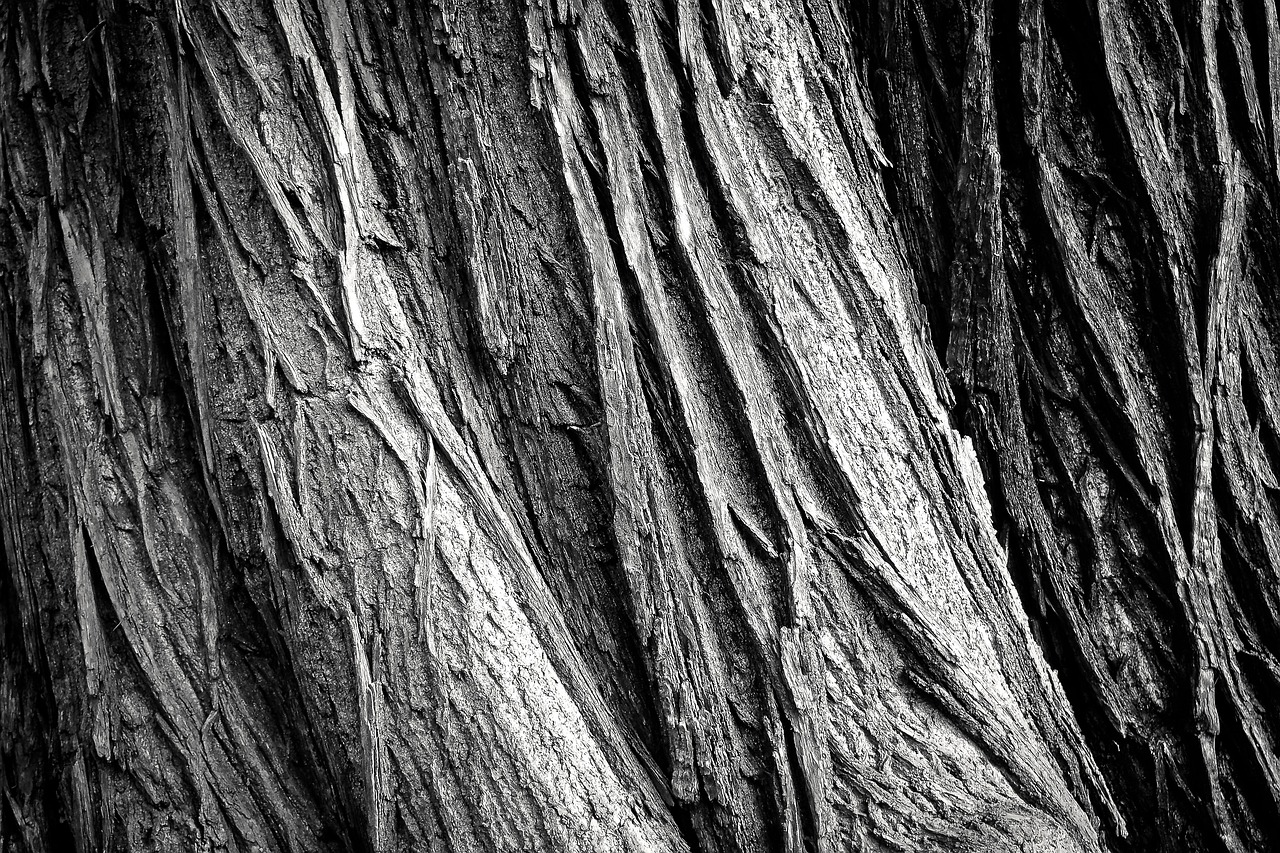The bark of a tree is its outer protective layer. It serves as a barrier against environmental threats, such as pests, diseases, and extreme weather. Additionally, it helps to transport nutrients and water within the tree, playing a crucial role in its overall health and longevity.
Understanding Tree Bark
Bark is one of the most vital parts of a tree. It consists of multiple layers, each serving a specific purpose. The outermost layer provides protection, while the inner layers are involved in transport and growth. Understanding bark is essential for appreciating how trees function and thrive in their environments.

The bark’s structure can vary significantly between different species of trees. This variation is due to adaptations that have evolved over time to meet the needs of the tree in its specific habitat. For example, some trees have thick, rough bark that protects against fire, while others have smooth bark that helps them shed water more effectively.
Layers of Bark
Bark is composed of several distinct layers. Below are the main layers that make up the bark structure:
- Phloem: This layer is responsible for transporting nutrients produced by photosynthesis from the leaves to other parts of the tree.
- Cambium: This thin layer of cells is where new bark and wood are formed. It plays an essential role in the growth of the tree.
- Xylem: Although primarily associated with wood, the inner layer of bark can include xylem cells that assist in water transport.
- Outer Bark: The outermost layer provides protection from physical damage and environmental stressors.
Functions of Bark
The bark of a tree serves various critical functions, which include:

- Protection: Bark protects trees from physical injuries and pests. It acts as a shield against harsh weather conditions.
- Transport: Bark is essential for transporting nutrients and water throughout the tree, ensuring its healthy growth.
- Storage: Some trees store extra nutrients and water in their bark, helping them survive during dry periods.
- Insulation: The bark provides insulation against extreme temperatures, protecting the inner tissues from damage.
Types of Bark
Bark can be categorized into two primary types: smooth bark and rough bark. Each type has its unique characteristics and advantages.
| Type of Bark | Description | Examples |
|---|---|---|
| Smooth Bark | This type is often thin and easy to peel. It helps in shedding water quickly. | Birch, Maple |
| Rough Bark | This type is thick and textured. It provides better protection against physical damage. | Pine, Oak |
The texture and thickness of bark can also change as trees age. Young trees often have smoother bark, while older trees develop more intricate textures and patterns. These changes can help identify tree species and determine their age.
Bark in Ecosystems
Bark plays a significant role in the ecosystem. It provides habitats for various organisms, including insects, birds, and fungi. These creatures contribute to the health of the environment by aiding in decomposition and nutrient cycling.

Moreover, some animals rely on bark for food. For example, certain insects and mammals feed on the inner layers of bark. This interaction highlights the interconnectedness of tree bark with broader ecological systems.
In summary, bark is not just a protective covering but a dynamic component of a tree’s life. Understanding its structure and functions allows us to appreciate trees’ importance in our environment more fully.
How Bark Develops Over Time
The development of bark is a fascinating process that reflects the life stages of a tree. As trees grow, their bark undergoes significant changes. Understanding this growth can help in identifying tree health and species. The development of bark typically involves several stages, each characterized by unique features.
Stages of Bark Development
Tree bark development can generally be divided into three stages: juvenile, mature, and old. Each stage has distinct characteristics and functions.

- Juvenile Bark: In young trees, bark is often smooth and thin. This phase allows for rapid growth and easy nutrient transport. The smooth texture also enables the tree to shed water effectively.
- Mature Bark: As trees reach maturity, their bark thickens and develops a more textured appearance. This stage provides added protection against environmental stressors, such as pests and diseases.
- Old Bark: In older trees, bark becomes even thicker and may develop deep fissures or ridges. This texture serves to insulate the inner layers and protect the tree from extreme weather conditions.
Factors Influencing Bark Development
Several environmental and biological factors influence how bark develops over time. Understanding these factors is essential for tree care and management.
- Species Type: Different tree species have varying bark characteristics. For instance, birch trees tend to have smooth bark, while oaks develop rough bark as they age.
- Environmental Conditions: Trees growing in harsh environments may develop thicker bark to protect against extreme temperatures and harsh winds.
- Growth Rate: Rapidly growing trees may have different bark development patterns compared to those that grow slowly. Faster growth can lead to smoother bark.
The Role of Bark in Tree Health
Bark is not only a protective layer but also a vital component in maintaining tree health. Several aspects of bark contribute to the overall wellness of a tree.
Indicator of Tree Health
The condition of a tree’s bark can serve as an indicator of its health. Various signs indicate potential issues:
- Cankers: These are sunken, dead areas on the bark that may indicate disease or infection.
- Peeling Bark: This can signal stress due to environmental factors, such as drought or pest infestations.
- Discoloration: Changes in color may suggest fungal infections or nutrient deficiencies.
Pest and Disease Resistance
A healthy layer of bark helps protect trees from pests and diseases. The thickness and texture of bark can deter certain insects from boring into the tree. For example, thick, rough bark is less appealing to wood-boring beetles.
Moreover, some species have developed specific adaptations in their bark that enhance resistance to pathogens. Trees like the redwood have evolved to produce tannins, which can inhibit fungal growth.
Bark in Cultural and Economic Contexts
Bark has played a significant role in human culture and economies throughout history. Various cultures have utilized tree bark for numerous purposes.
Uses of Bark in Different Cultures
Bark is not just important for trees; it also has various uses in human societies:
- Medicinal Uses: Certain types of bark, such as willow, have been used in traditional medicine for their anti-inflammatory properties.
- Crafting Materials: Indigenous peoples have historically used bark for making baskets, clothing, and even canoes.
- Culinary Uses: Some barks are used as spices or flavorings. For example, cinnamon is derived from the inner bark of specific trees.
Economic Importance of Bark
The economic value of bark extends into various industries:
- Tanning Industry: Bark from specific trees is used in the tanning process to produce leather.
- Pulp and Paper Industry: Bark is often used as a raw material for producing paper products.
- Essential Oils: Some barks are processed to extract oils for perfumes and aromatherapy.
This multifaceted role of bark not only highlights its ecological significance but also its value to human culture and industry. Understanding these aspects enriches our appreciation of trees beyond their physical presence in the landscape.
Tree Bark and Its Relationship with Climate
The bark of a tree is not only a protective barrier but also plays a critical role in how trees interact with their environment. Climate significantly influences bark characteristics and the overall health of trees. Understanding this relationship provides insights into how trees adapt to varying conditions.
Impact of Temperature on Bark
Temperature fluctuations can greatly affect the growth and development of bark. Trees in warmer climates often exhibit different bark properties compared to those in cooler regions. For example:
- Thicker Bark in Warmer Climates: Trees in hotter regions may develop thicker bark to offer better insulation and protection from heat stress.
- Smoother Bark in Cooler Climates: In colder climates, trees may have smoother bark that helps shed snow and ice, reducing the risk of physical damage.
Effects of Moisture Levels
Moisture availability also plays a significant role in bark characteristics. Trees in dry regions often adapt in ways that allow them to conserve water:
- Desert Trees: Species such as the mesquite develop thick, corky bark that reduces water loss through evaporation.
- Wetland Trees: In contrast, trees in wet areas may have thinner bark that facilitates gas exchange and nutrient absorption from waterlogged soil.
Bark and Tree Growth
Bark is essential for tree growth and development. The health of a tree’s bark directly impacts its ability to grow and thrive. Several factors contribute to this relationship.
The Role of Bark in Nutrient Transport
Bark contains the phloem layer, which is crucial for transporting nutrients throughout the tree. The efficiency of this transport system ensures that all parts of the tree receive essential resources:
- Photosynthesis: Nutrients produced in the leaves are transported down through the phloem to nourish the roots and stem.
- Storage Capability: Bark also serves as a storage site for nutrients, helping trees survive during periods of scarcity.
Bark and Tree Stability
The structural integrity of a tree relies heavily on the health of its bark. Strong, healthy bark contributes to overall tree stability:
- Support for Growth: A robust outer bark helps protect the inner layers that support tree growth.
- Protection Against Physical Damage: Thick bark can absorb impacts from environmental forces, such as wind or falling branches, reducing the risk of injury.
Bark as a Habitat
Bark provides a habitat for numerous organisms, contributing to biodiversity. Various species depend on the bark for shelter and food:
Insects and Microorganisms
Bark is home to many insects and microorganisms that play a vital role in the ecosystem:
- Beneficial Insects: Certain beetles and ants create tunnels within the bark, aerating the wood and promoting decomposition.
- Fungi: Fungi colonizing bark can break down organic matter, enriching the soil and benefiting surrounding plants.
Birds and Mammals
Bark also serves as a nesting site for birds and shelter for various mammals:
- Nesting Sites: Many birds use hollows in tree bark for nesting, providing safety for their young.
- Shelter for Small Mammals: Animals like squirrels may find refuge in the crevices of thick bark, offering protection from predators.
Bark in Environmental Conservation
The ecological significance of bark extends into environmental conservation efforts. Healthy forests contribute to climate regulation and biodiversity preservation. Understanding bark’s role can inform conservation strategies.
Importance in Carbon Sequestration
Bark plays a role in carbon sequestration, helping to mitigate climate change. Trees absorb carbon dioxide during photosynthesis, storing carbon in their biomass, including the bark:
- Carbon Storage Capacity: The thicker the bark, the more carbon can be stored within the tree over its lifetime.
- Long-Lived Trees: Trees that live longer tend to sequester more carbon, making their bark an essential component of carbon storage efforts.
Bark’s Role in Soil Health
The decomposition of fallen bark contributes organic matter to the soil, enhancing its health and fertility:
- Nutrient Cycling: Decomposed bark enriches soil with nutrients, improving growth conditions for other plants.
- Erosion Prevention: A layer of decomposing bark can help prevent soil erosion by holding soil particles together.
This interconnectedness highlights how understanding tree bark is crucial for fostering healthy ecosystems and promoting environmental sustainability.
Exploring the Future of Bark Research
As we deepen our understanding of tree bark, ongoing research continues to reveal new insights into its ecological and economic importance. Scientific studies are increasingly focusing on how bark can contribute to sustainability and conservation efforts in a changing climate.
Innovations in Bark Utilization
Innovative uses of bark are emerging across various industries, reflecting a growing awareness of sustainable practices. Some notable developments include:
- Bark-Based Bioplastics: Researchers are exploring the potential of converting bark into biodegradable plastics, providing a sustainable alternative to petroleum-based products.
- Insulation Materials: Bark fibers can be processed to create insulation materials for construction, reducing reliance on synthetic options and enhancing energy efficiency.
- Natural Dyes and Pigments: The extraction of natural dyes from bark is gaining popularity in the textile industry, promoting eco-friendly coloring methods.
Bark and Climate Change Mitigation
With the growing concern over climate change, understanding the role of tree bark in carbon sequestration becomes even more crucial. Efforts are being made to preserve and restore forests globally, which can enhance the carbon storage capacity of tree bark:
- Reforestation Initiatives: Planting more trees can improve global carbon uptake, making bark an important focus in these efforts.
- Biodiversity Preservation: Protecting diverse tree species contributes to healthier ecosystems, allowing for more effective carbon storage through varied bark characteristics.
Bark in Education and Public Awareness
Education plays a vital role in fostering awareness about the importance of trees and their bark. Programs aimed at school children and local communities can help instill a sense of responsibility toward tree conservation:
- Tree Identification Workshops: Educational programs can teach individuals how to identify different tree species based on their bark characteristics, enhancing appreciation for biodiversity.
- Community Tree Planting Events: Encouraging local communities to participate in tree planting helps to raise awareness about the environmental benefits of trees and their bark.
Final Thoughts
The significance of bark extends far beyond its protective outer layer. It serves as a crucial component in the health of trees, their interactions with the environment, and their roles in ecosystems. From providing habitats for various organisms to its contributions to biodiversity and climate change mitigation, bark is integral to sustaining life on Earth.
Furthermore, as research continues to uncover new applications and benefits of tree bark, it becomes clear that fostering a deeper understanding of this natural resource is essential. By recognizing the multifaceted roles of bark, we can better appreciate its contribution to ecological balance and human endeavor.
In summary, trees and their bark are invaluable assets that deserve our attention and protection. Whether through conservation efforts, innovative uses in industry, or educational initiatives, ensuring the health and longevity of trees will ultimately benefit our planet and future generations.
